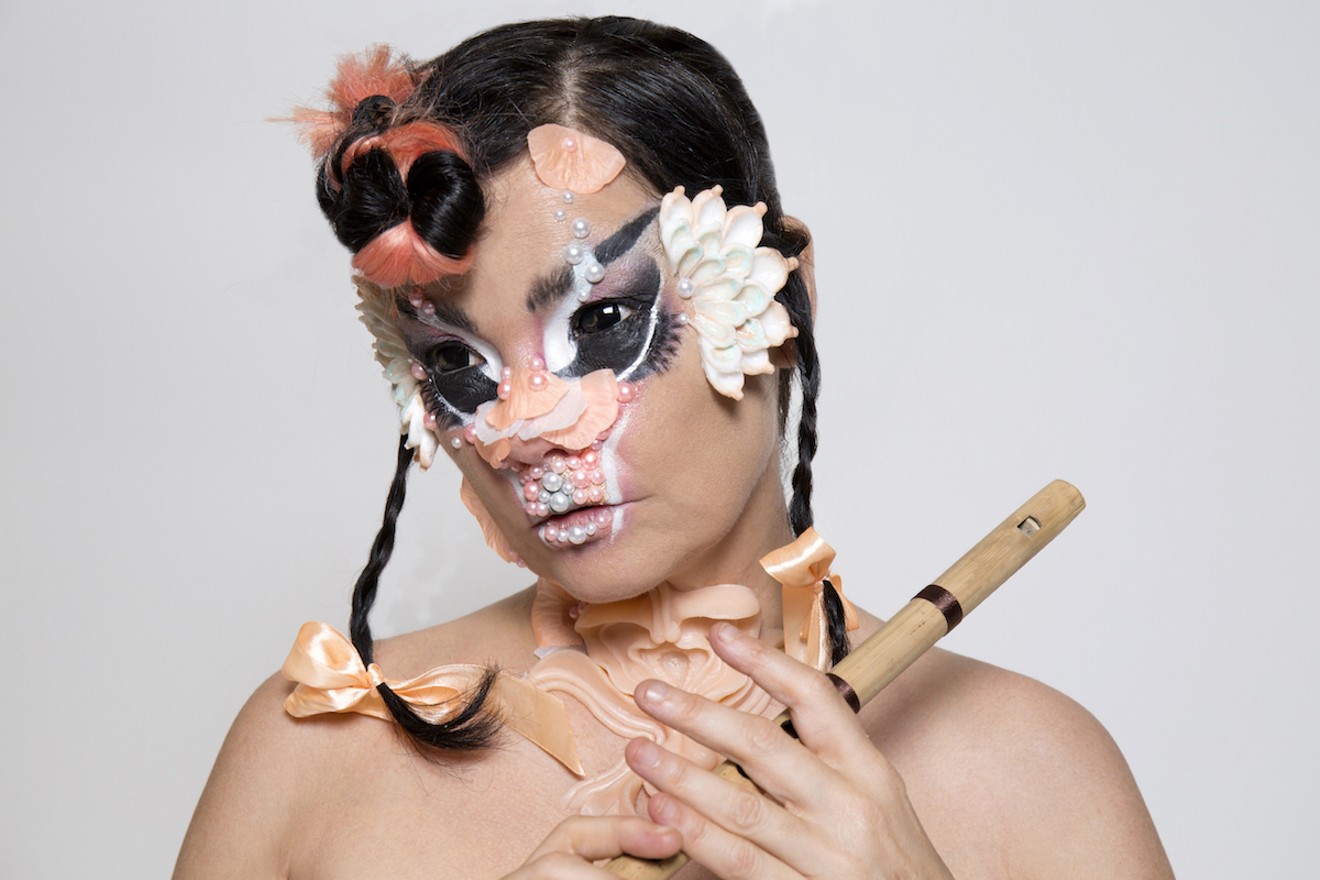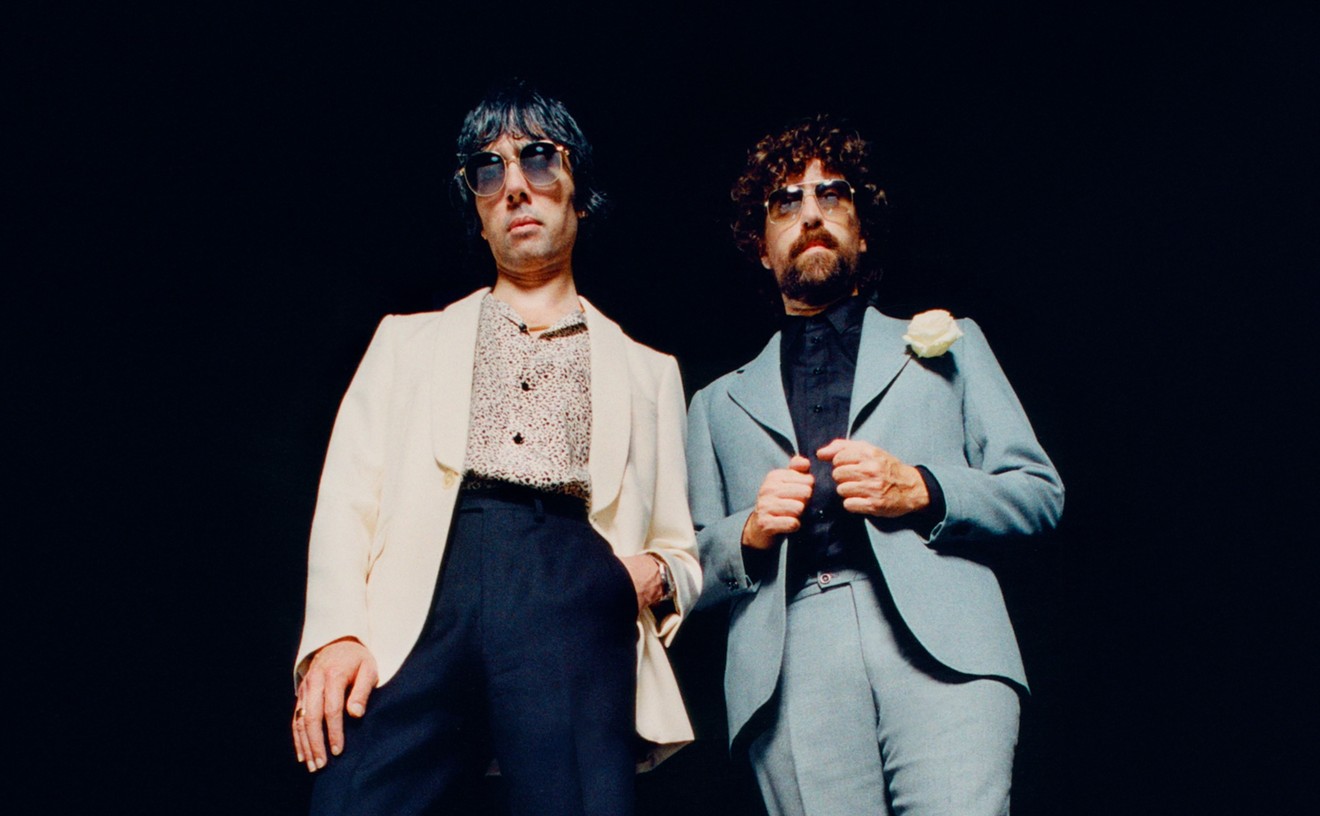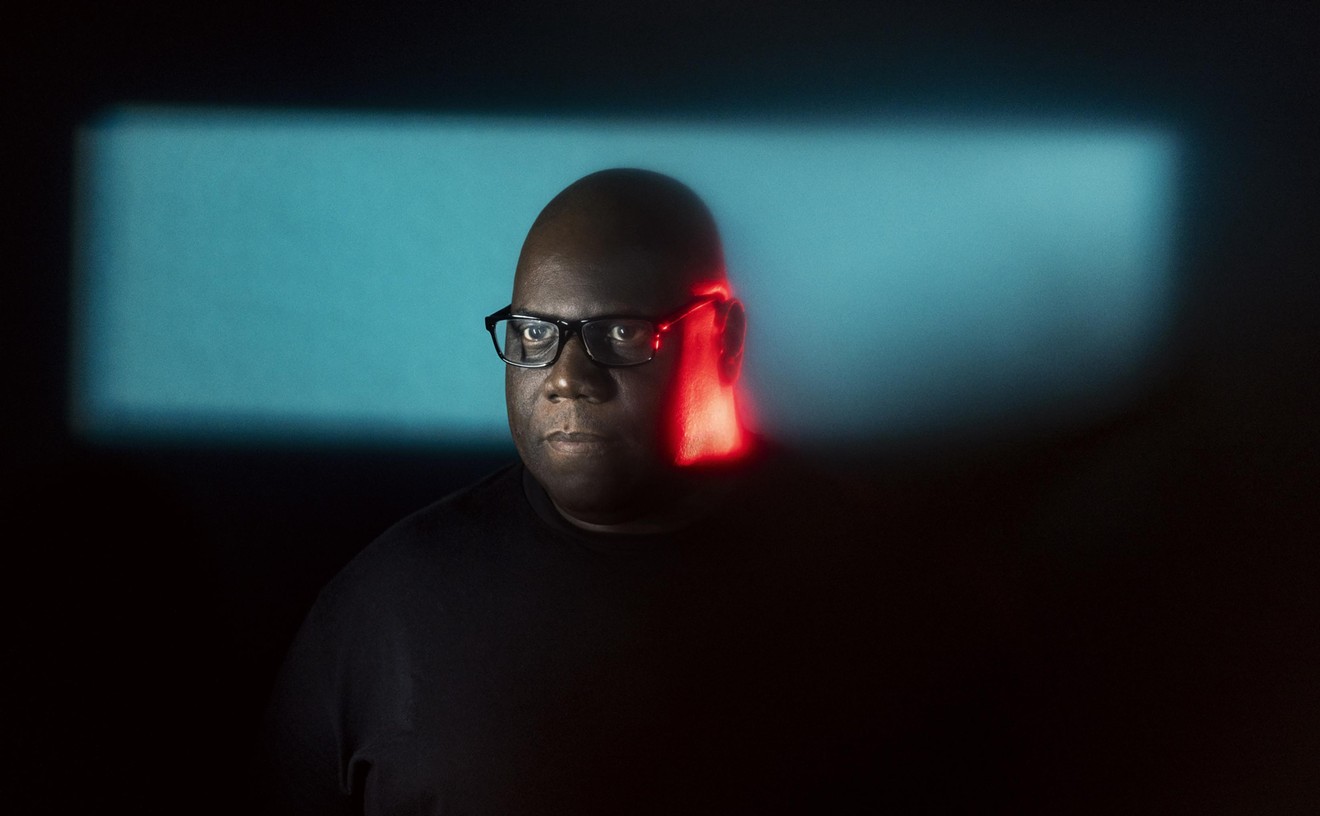On her latest single, "Blissing Me," Björk relishes the thought of once again being in love.
“All of my mouth was kissing him/Now, into the air, I'm missing him.”
She sounds practically giddy, which is a far cry from the songs on her 2015 album, Vulnicura, a deeply personal retelling of the breakup with her longtime partner, artist Matthew Barney. Covered in light-blue chiffon, she's smiling so wide that the heavy makeup adorning her face can't hide her state of bliss.
The song is the second cut off the 52-year-old Icelandic singer-songwriter's latest album, Utopia, which dropped last week. She has referred to it as her "Tinder album," and lines such as "Sending each other MP3s/Falling in love to a song" seem to reinforce Björk's exploration of love in the technological age.
Though Vulnicura was hailed as a return to form for Björk, Utopia signals a stronger lean toward her pop sensibilities. Both the first single, "The Gate," and "Blissing Me" wouldn't feel out of place on 2001's Vespertine, with its similar mix of string-heavy compositions and enamored lyrics. Earlier this month, she told Pitchfork that "Loss" was a continuation of "Pagan Poetry," off the same record, calling it “a certain sort of girl-goth music.” That's because as avant-garde as Björk might seem, she's always been a pop artist at heart. Even on experimental albums such as Medúlla and Biophilia, she has never lost her knack for putting together a strong melody. Her return to love songs — the bread and butter of pop music — only strengthens her status as a pop icon.
If you need proof, look at her ascension into gay-icon status. Her career began when she was 11 years old, and she later rose to popularity as the lead singer for the Sugarcubes in the '80s. She went solo in 1993. Since then, Björk has been the music of choice for quirky girls and questioning teenage boys. She has always embraced doing the exact opposite of what was expected from pop stars. Her rise to cult act certainly came on the strength of her music videos, which were directed by a who's who of talented auteurs, including Spike Jonze, Michel Gondry, and Chris Cunningham. Her surreal, artsy videos helped take music television to its peak in the '90s. Before YouTube allowed for on-demand viewing, a new music video by your favorite artist was reason enough to stay home on a Friday night.
Björk embraced the format and saw her notoriety rise in both Europe and the States thanks to her arresting visuals. Who can forget when Jonze had Björk dance like she was in a Hollywood musical in "It's Oh So Quiet" or how Cunningham had a convincingly realistic robot Björk fall for herself in "All Is Full of Love"?
And though Björk enjoyed relative popularity in the '90s — even Madonna collaborated with her for the track "Bedtime Story" in 1994 — she cemented her pop-culture status when she walked the red carpet at the Academy Awards in 2001 wearing a swan dress. (She would also wear the frock on the cover of Vespertine.) Though she was initially mocked by critics — Joan Rivers commented, “This girl should be put into an asylum” — the dress is now an iconic piece of fashion history.
For all the work she has put into ensuring her visual style is as complete as her music, Björk was rewarded with a retrospective at New York's Museum of Modern Art. Unfortunately, the exhibit was panned by critics who thought its narrow scope was underdeveloped. "The show is billed as a 'midcareer survey,' but its disappointing catalog indicates little of the research, documentation, or context setting that such projects usually entail," the New York Times wrote about the retrospective.
Still, their disappointment in the exhibit doesn't extend to Björk's body of work. In fact, most critics felt let down because they thought her career deserved more extensive and careful documentation.
However, it's not as if her career is sunsetting and in need of curatorial preservation. Utopia confirms that fact.
The 14-track release is her ninth album. Once again tapping Venezuelan producer Arca to help her with the beats, she described the project to the New York Times as "a love letter to enthusiasm and optimism." On the heels of the emotionally turbulent Vulnicura, that's a remarkable turn for the singer. In that album's climax, "Black Lake," she sang, "You have nothing to give/Your heart is hollow." Subtlety is not necessary when matters of the heart are concerned.
So consider Utopia a sequel: what happens when your heart has mended and you're ready to love again. "I care for you, care for you," she proclaims in "The Gate," letting it be known that heartbreak hasn't taken away the hope that she'll again find someone.
Björk (DJ set). With Oneohtrix Point Never (DJ set). 9 p.m. Tuesday, December 5, at Mana Wynwood, 318 NW 23rd St., Miami; 305-573-0371; manawynwood.com. Tickets cost $55 to $133 via showclix.com.
[
{
"name": "Air - MediumRectangle - Inline Content - Mobile Display Size",
"component": "19274298",
"insertPoint": "2",
"requiredCountToDisplay": "2"
},{
"name": "Editor Picks",
"component": "17482312",
"insertPoint": "4",
"requiredCountToDisplay": "1"
},{
"name": "Inline Links",
"component": "18711090",
"insertPoint": "8th",
"startingPoint": 8,
"requiredCountToDisplay": "7",
"maxInsertions": 25
},{
"name": "Air - MediumRectangle - Combo - Inline Content",
"component": "17482310",
"insertPoint": "8th",
"startingPoint": 8,
"requiredCountToDisplay": "7",
"maxInsertions": 25
},{
"name": "Inline Links",
"component": "18711090",
"insertPoint": "8th",
"startingPoint": 12,
"requiredCountToDisplay": "11",
"maxInsertions": 25
},{
"name": "Air - Leaderboard Tower - Combo - Inline Content",
"component": "17482313",
"insertPoint": "8th",
"startingPoint": 12,
"requiredCountToDisplay": "11",
"maxInsertions": 25
}
]












